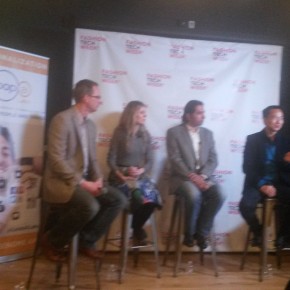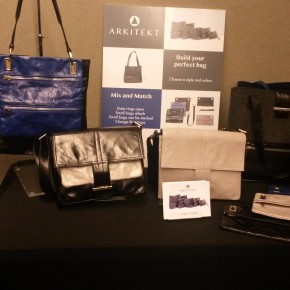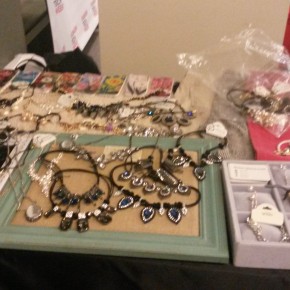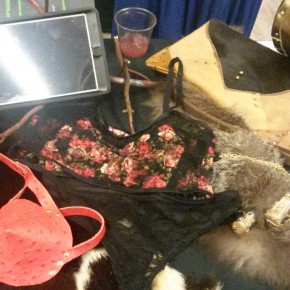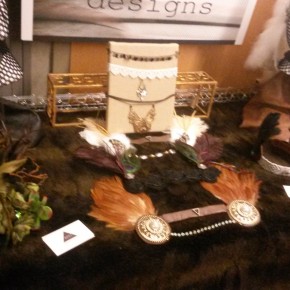- Retail Tech Summit: Innovations in Personalization
- Arkitekt purses
- Locally made jewelry on display
- Locally designed accessories
- Fashion on display
Does San Francisco have its own fashion aesthetic and sense of style? While not as well known for its fashion industry as, say, Paris or New York, the city houses a number of emerging clothing and accessory entrepreneurs. Many would say that San Francisco is creating its own scene rather than emulating the more established areas.
At the invitation of Owen Geronimo, founder of the San Francisco Fashion and Merchants Alliance, I attended the opening reception of 2015’s Fashion and Tech Week and a panel discussion on personalizing the retail experience through technology.
The opening reception included displays of clothes, jewelry, scarves and purses from several designers. Highlights included a line of leather purses made to fit inside each other so one could bring all of one’s belongings, including one’s laptop, to the office and then remove a smaller interior purse with only one’s cash, cards and ID at lunchtime. Another designer created a display that resembled a wooded cabin lodge and explained how her leather was sourced humanely, harvested from cows who had already died of natural causes.
Several people at the event pointed to other cultural influences that have shaped San Francisco, including startup and small business culture, environmental consciousness and the do-it-yourself ethic practiced here and highlighted at the annual Burning Man festival. During the festival, which now takes place in the Nevada desert but used to be hosted at San Francisco’s Baker Beach, participants camp for a week in the wilderness, relying on food and water and other supplies they have brought with them. These cultural ideas have brought natural and recycled fabrics, acceptance of creative re-use through consignment and thrifting, and a more individual and personal sense of style into San Francisco’s aesthetic.
The following night several entrepreneurs, software developers and bloggers discussed technical and business methods for tracking and anticipating retail customers’ preferences when they buy clothes and accessories. In addition to being able to target marketing to the individual consumer, small and larger retail businesses hope to eventually incorporate customer preference into a feedback loop guiding product design. So, customers would become co-creators to some extent with the companies who produce and design fashion items.
I was not able to make it to the remaining three events of San Francisco Fashion and Tech Week, so I talked with Alexius Kaitlynn Baker and others there about what was planned for those nights. Alexius invited me to read her blog Divine Imperfection where she reviewed and posted photos of Dapperhood: The Evolution of Menswear, Fashion Bloggers Connect with SheTalks forum/Women in Tech, and WearTechCon: Art and Style of Wearables.
From what I read in her blog, these three events further illustrated how technology and entrepreneurship influence San Francisco’s fashion scene while showing off the work of many creative designers. While designers are still honing the balance between technical function and elegance when it comes to consumer products, the diverse ideas reflected through the product demonstrations show rich promise for the city’s developing aesthetic.

